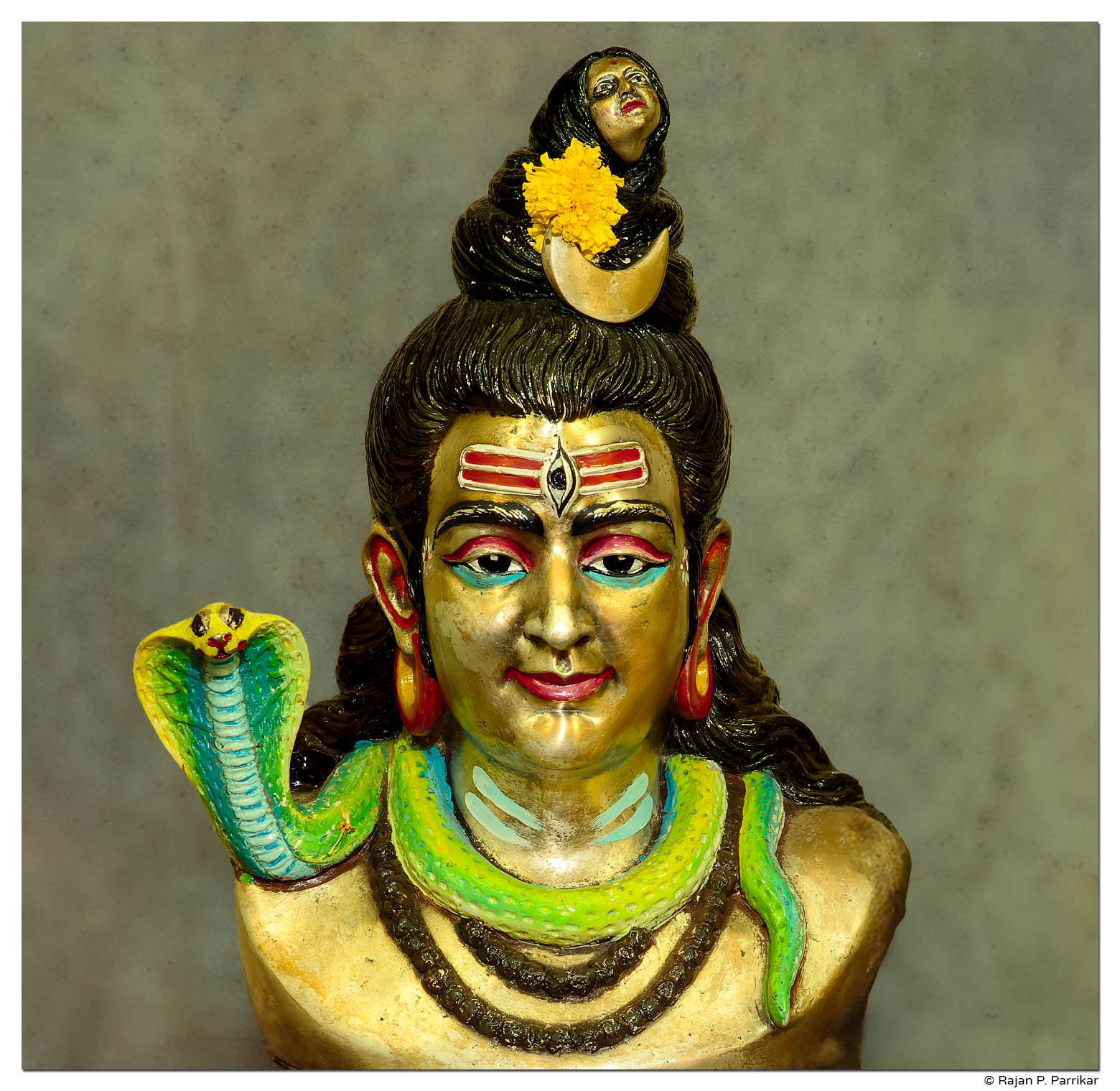Har Har Mahadeva!
Mahashivaratri will be celebrated tonight all over India, Nepal, Sri Lanka, as well in enclaves of Shaivite influence around the world (eg. Bali, Vietnam, Mauritius).
This yearly shindig is a tribute to Lord Shiva, the Supreme Yogi & Ascetic, Nataraja, Eternal Guru, and Transcendent Kook, to cite a few of His manifold forms. Given His wild temperament it is only natural that Mahadeva is BFF with a ragtag bunch of bums, crazies, and oddballs. Together they gather in the stillness of their favourite haunt, the cremation grounds, where the Lord is often found transfixed in meditation.
This image is from the Kamleshwar Temple in Korgaon, Goa.

Shiva
5D Mark III, 24-105L
One of the numerous manisfestations of Lord Shiva – the ever auspicious One – is that of Kalabhairava. The word bhairava (derived from the Sanskrit root verb bhῑ) usually means “fear,” “terror.”
kāla means “time” and this form of Shiva is often associated with the dissolution of the universe. As such, He is typically portrayed as a fierce, and sometimes even malevolent, deity. But a careful analysis of text and iconography shows the truly benevolent nature of Kalabhairava. For Shiva is known not just as mahākāla (associated with death, dissolution) but also as kālakāla; viz., He is also the One who destroys the temporality of the universe perceived by the senses, by making the sincere devotee realize the true nature of the Universe which is nothing but Shiva.
For this reason, many hymns to Kalabhairava juxtapose both His terrifying and benign forms. The reader will note the similarity with the Viṡṇusahasranāma (the one thousand and eight names of Vishnu) where the Supreme Being is called both bhayakrt (One who causes fear) and bhayanāśana (One who destroys fear).
Shiva as Kalabhairava has a long history in Indian religious thought. The Saivite saint from Tamil Nadu, Tirunavukkarasar (also known as Appar) who lived in the 6th century CE names Kalabhairava in one of his hymns (Appar Tevaram 4.73.6). The hymn is composed in praise of Lord Shiva in the town of Tiruccerai (known today also as Udaiyar Kovil, approximately 15 km S-SE of the famous temple town Kumbakonam).
Lustrous rays spread from His trident,
His damaru sounds explosive;
With the Gangā flowing on His head,
He appears as Kālabhairavan –
and strips the skin off the elephant*
.
Seeing Umā frightened,
He laughs – shows
His bright teeth and coral lips –
and graces all,
the Lord who resides in the temple of Cenneṛi**
*The story of Gajasura slain by Shiva. Shiva then wears the hide of this asura as His garment. The depiction of this purana is seen widely in the Pallava iconography of Tamil Nadu.
**The name of the temple in the town of Tiruccerai. The literal meaning of the word is “righteous path.”
Kalabhairava is also known as the Lord of Kashi (Varanasi) – the eternal city. The Kālabhairavāṡṭakam, attributed to Adi Shankara (ca. 7th century CE) is a popular hymn comprising eight verses in praise of Kalabhairava in Kashi. The following is a translation of the seventh verse from this hymn:
Millions of universes that look like lotus buds
are split asunder
as He roars with laughter;
His glance destroys
the fruits of all misdeeds and
His orders are wrathful;
He bestows the eight-fold siddhi-s
and wears a garland of skulls.
The Lord of Kashi – Him, I praise!
Muthuswami Dikshitar, the celebrated vāggeyakāra (composer-musician) of Carnatic Music who lived in the 18th -19th centuries CE, has a composition in praise of Kalabhairava, the Lord of Kashi. A recording by Vid. Trichur V. Ramachandra.





Dan, Antonio, and Richard: Thank you, gentlemen.
Very enjoyable. All of it. Thank you Rajan
Thank you, Rajan-Bab. I wish you a Holy Celebration of Mahashivaratri
I love an image that has a back story amigo! I took a class in India Religions 101 but remember very little. A war got in the way of my focus!
Thanks again! Wonderful work!